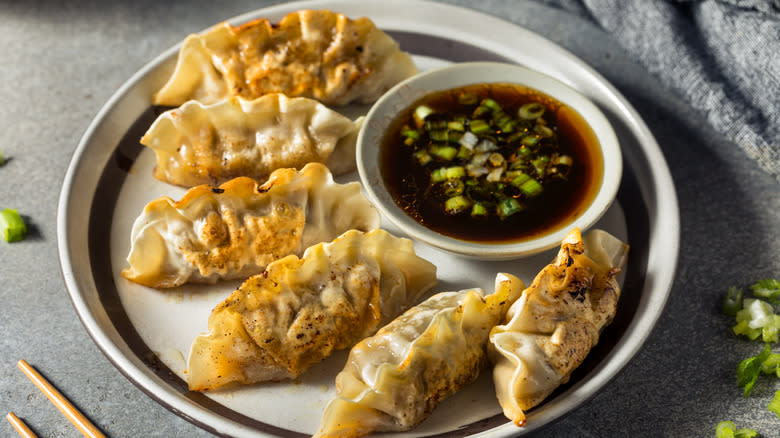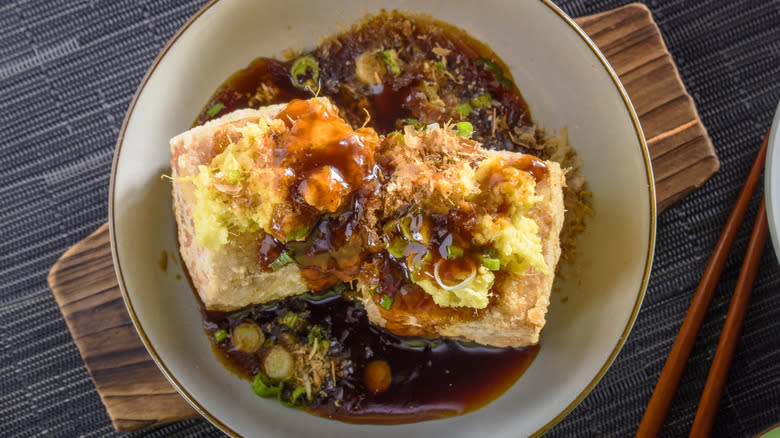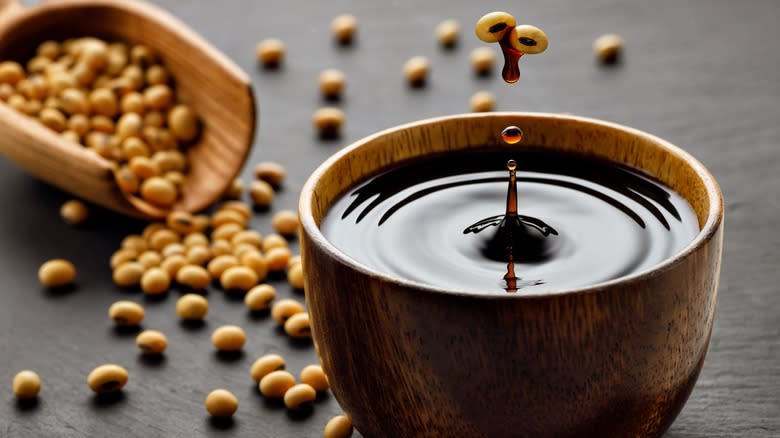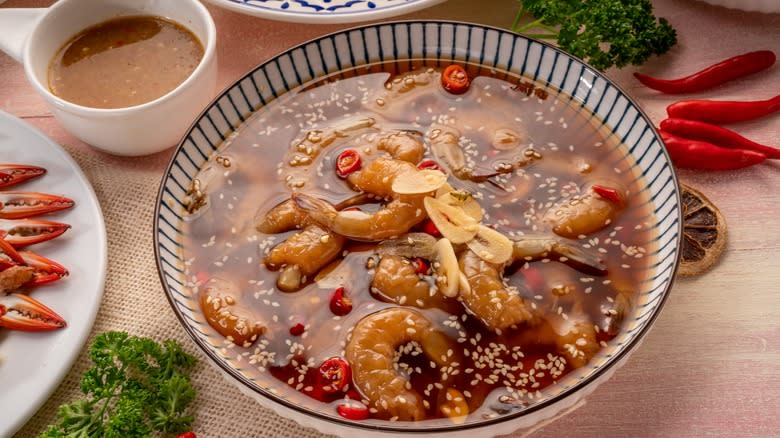Yangnyeomjang Is The Korean Seasoning Sauce You Should Know

International sauces run the gamut of colors and consistencies and are a foolproof method of instilling flavor. Korean cuisine makes wonderful use of myriad sauces, such as a small bowl of ssamjang accompanying KBBQ or a fermented soybean ganjang used for dipping.
One especially notable Korean sauce is known as yangnyeomjang, which is also sometimes written as two words: "yangnyeom jang." Utilized for coating everything from tofu to meat and for dipping dumplings, Yangnyeomjang is a wondrously versatile creation. Concocted from a soy sauce base, it's easily tweaked to showcase a sweeter, saltier, or earthier side and is often accompanied by a sesame seed topping.
While it plays a central role in many classic Korean dishes, it's also a handy concoction that works well alongside other foods, too. You can use it as a salad dressing or as a simple way to elevate seafood. All it takes is nailing the perfect balance of components. Let's dive into what yangnyeomjang is all about.
Read more: Vinegar Cooking Hacks You'll Wish You Knew Sooner
What Is Yangnyeomjang?

Yangnyeomjang is a type of seasoning sauce rather than a dipping sauce, which means it's often used as a central flavor component in dishes. In fact, even part of its name, "yangnyeom," translates to "seasoned" in Korean. It's easily confused with the similarly named yangnyeom, which is a sticky, gochujang-based creation popular on chicken, rather than a seasoning sauce crafted with soy sauce.
Yangnyeomjang is salty, sweet, earthy, and tangy all at once, with a liquid consistency that readily coats ingredients. It's rarely sold pre-bottled and is instead typically crafted fresh. The ingredient ratios are altered based on the particular application -- of which there are many. Although Yangnyeomjang doesn't contain many components, it yields an impressive complexity that melds beautifully with food. As a result, it functions more like an elaborate soy sauce with increased malleability rather than a stock condiment defined by a specific dish.
Ingredients In Yangnyeomjang

Since yangnyeomjang relies on soy sauce for its principal flavor, it's necessary to use a high-quality variant. Don't opt for a light soy sauce. Instead, reach for a full-bodied sauce from a reputable producer. Sesame seeds, sugar, and gochugaru (a type of dried red pepper) are principal components of yangnyeomjang. Most versions also add sesame oil as well as rice wine vinegar, although the amount of acid depends on the application, and some versions leave these ingredients out entirely. The sauce is mixed together and diluted with water or anchovy stock for an added umami boost.
Yangnyeomjang is crafted differently depending on the dish, so deviations from the standard recipe are common. A version for fried foods and seafood might up the tangy component and even including lemon juice. Alternatively, a greater ratio of sesame oil amplifies the sauce's earthiness. Just a gentle tweak can showcase a different facet of yangnyeomjang, which is one of its greatest strengths.
How To Cook With Yangnyeomjang

Yangnyeomjang is like an extra aromatic soy sauce, which makes it extremely malleable. The sauce is frequently served alongside dumplings, including mandu and other varieties such as gyoza. The sauce is also a frequent complement to crispy pan-fried tofu. Yangnyeomjang's complementary effect to crispy textures also applies to savory pancake-type foods, including the beloved kimchi variety. Alternatively, it also makes for a delicious salad dressing, often spooned over cucumbers in a dish known as yache moochim. Yangnyeomjang accompanies acorn jelly, too, adding a bright, tangy note to counterbalance the dish's earthiness.
The sauce works wonderfully with entrees as well. It complements seafood by adding tang to clams or functioning as a marinade for gejang, a preserved crab dish. Some serve yangnyeomjang as a dipping sauce alongside Korean BBQ or simple boiled meats. And, it's the central flavor for a soybean rice bowl. Just one taste showcases why it's so popular, and you might be tempted to throw yangnyeomjang onto every savory meal.
Read the original article on Tasting Table.

